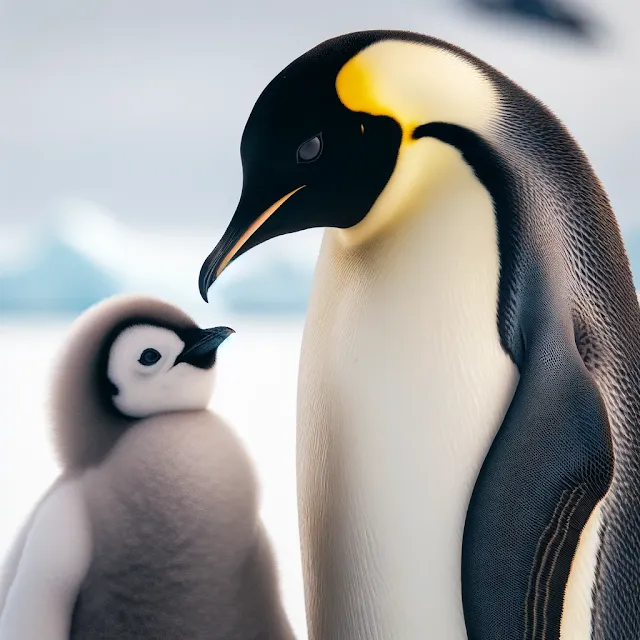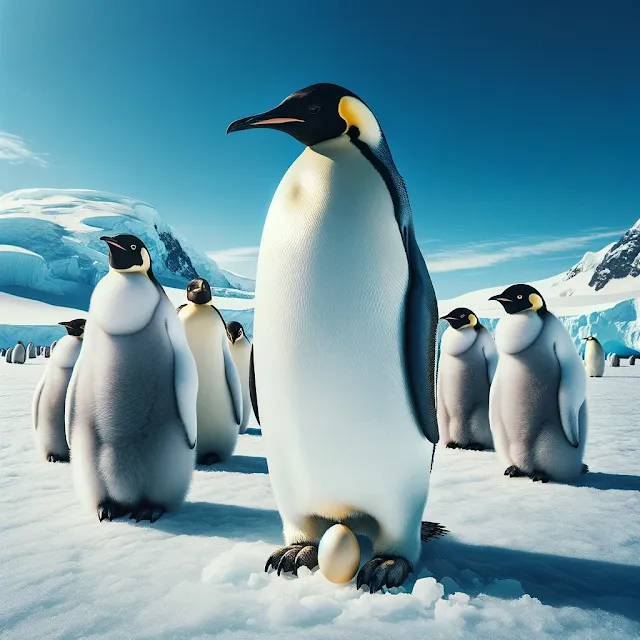Penguins: Nature's Dapper Divers
Penguins are some of the most intriguing and beloved creatures in the animal kingdom. Known for their distinctive black and white plumage and their unique waddling gait, these flightless birds have captured the hearts of people worldwide. But there's much more to penguins than their charming appearance. In this blog post, we'll delve into the fascinating world of penguins, exploring their biology, behavior, habitats, and the challenges they face in the modern world.
The Biology of Penguins
Penguins belong to the family Spheniscidae, which includes 18 different species. These species vary significantly in size and appearance, but all share common characteristics that make them uniquely suited to their environments.
Anatomy and Adaptations
Penguins are flightless birds with flippers adapted for swimming rather than flying. Their bodies are streamlined for efficient movement through water, and they have strong, webbed feet that help them maneuver. Penguins have a layer of fat, known as blubber, and dense, waterproof feathers to keep them warm in cold waters.
Their black and white coloration serves as camouflage while swimming. The dark back blends with the ocean depths when viewed from above, while the white belly matches the bright surface when seen from below, protecting them from predators.
Unique Features
Penguins have several unique adaptations. For instance, their eyes are adapted for underwater vision, allowing them to spot prey in the dim light of the ocean. They can also drink saltwater, thanks to a special gland that filters out the salt, allowing them to survive in their marine habitats.
Penguin Species and Their Habitats
Penguins are primarily found in the Southern Hemisphere, with habitats ranging from the icy shores of Antarctica to the temperate islands of the Galápagos. Here, we'll explore a few notable species and their unique environments.
Emperor Penguins
The Emperor Penguin (Aptenodytes forsteri) is the tallest and heaviest of all penguin species. Standing nearly four feet tall and weighing up to 88 pounds, they are iconic residents of the Antarctic. Emperor Penguins are famous for their incredible breeding cycle, which involves males enduring the harsh Antarctic winter to incubate their eggs.
Adélie Penguins
Adélie Penguins (Pygoscelis adeliae) are smaller but equally fascinating. These penguins also inhabit the Antarctic and are known for their long migrations, traveling up to 8,000 miles a year. Adélie Penguins build nests out of stones and are highly social, often seen in large colonies.
Galápagos Penguins
The Galápagos Penguin (Spheniscus mendiculus) is one of the smallest penguin species and the only one found north of the equator. These penguins have adapted to the warmer climate of the Galápagos Islands, and their population is critically endangered, with fewer than 2,000 individuals remaining.
African Penguins
African Penguins (Spheniscus demersus), also known as "jackass penguins" due to their donkey-like bray, inhabit the rocky coastlines of South Africa and Namibia. They face significant threats from oil spills and overfishing, which have led to a drastic decline in their numbers.
The Life of a Penguin
Penguins lead fascinating lives, characterized by complex social behaviors, unique reproductive strategies, and impressive survival skills.
Social Structure and Communication
Penguins are highly social animals, often forming large colonies that can number in the tens of thousands. These colonies provide safety in numbers and opportunities for social interaction. Penguins communicate through a variety of vocalizations and body language. Each species has its own set of calls used for mating, warning of predators, and maintaining group cohesion.
Breeding and Rearing Chicks
Penguin breeding strategies are as diverse as their species. For example, Emperor Penguins lay a single egg, which the male incubates on his feet under a flap of skin called a brood pouch. In contrast, Adélie Penguins lay two eggs in nests made of stones. Both parents take turns incubating the eggs and feeding the chicks.
Once hatched, penguin chicks are cared for by their parents until they are ready to fend for themselves. This period varies by species but often involves the chicks forming groups called crèches, where they huddle together for warmth and protection while their parents hunt.
Foraging and Diet
Penguins are carnivorous and primarily feed on fish, squid, and krill. Their hunting methods vary; some species dive deep into the ocean, while others hunt in shallower waters. Penguins can dive to impressive depths—Emperor Penguins, for example, can reach depths of over 1,800 feet and stay underwater for more than 20 minutes.
Penguins rely on their keen eyesight to locate prey, and their streamlined bodies enable them to swim at speeds of up to 15 miles per hour. Their flippers act like powerful paddles, propelling them through the water with grace and efficiency.
Challenges and Conservation
Despite their adaptations and resilience, penguins face numerous challenges in the modern world. Climate change, overfishing, habitat destruction, and pollution all threaten their populations.
Climate Change
Climate change is one of the most significant threats to penguins, particularly those living in polar regions. Rising temperatures lead to the melting of sea ice, which reduces the availability of krill, a crucial food source for many penguin species. Changes in sea ice also affect breeding and molting cycles, disrupting the delicate balance of their ecosystems.
Overfishing
Overfishing depletes the fish stocks that penguins rely on for food. Species like the African Penguin have been severely impacted by the competition for fish with commercial fisheries. Efforts to establish marine protected areas and regulate fishing practices are essential to ensure sustainable fish populations.
Pollution
Oil spills, plastic pollution, and other contaminants pose significant threats to penguin populations. Oil spills can coat penguins' feathers, reducing their insulating properties and making it difficult for them to swim and hunt. Ingested plastic can cause internal injuries and blockages, leading to malnutrition and death.
Conservation Efforts
Conservation efforts are underway to protect penguins and their habitats. Organizations like the World Wildlife Fund (WWF) and the International Union for Conservation of Nature (IUCN) are working to establish protected areas, conduct research, and raise awareness about the plight of penguins.
Captive breeding programs, habitat restoration projects, and regulations on fishing practices are all part of a multifaceted approach to conservation. Public awareness campaigns and ecotourism also play vital roles in supporting these efforts by generating funds and encouraging responsible behavior towards wildlife.
Penguins in Popular Culture
Penguins have a special place in popular culture, often depicted as charming and comical characters in movies, books, and cartoons. From the lovable Mumble in "Happy Feet" to the clever penguins in "Madagascar," these birds have endeared themselves to audiences of all ages.
Penguins are also popular in zoos and aquariums, where they serve as ambassadors for wildlife conservation. Their playful antics and endearing behaviors make them favorites among visitors, helping to raise awareness about the importance of preserving their natural habitats.
Penguins are remarkable creatures, perfectly adapted to their environments yet vulnerable to the changes brought about by human activity. Their fascinating biology, complex behaviors, and the challenges they face make them a compelling subject for study and conservation.
As we continue to learn more about these incredible birds, it is essential to support conservation efforts that protect their habitats and ensure their survival for future generations. Whether through research, advocacy, or simply appreciating their beauty and resilience, we all have a role to play in preserving the enchanting world of penguins.
By understanding and protecting penguins, we not only safeguard a unique and irreplaceable part of our natural world but also promote a healthier planet for all its inhabitants.












0 Comments